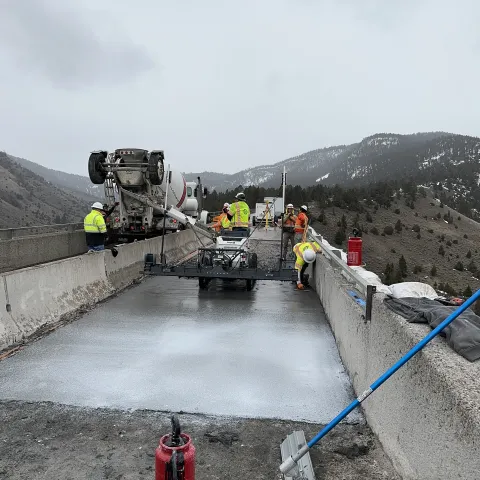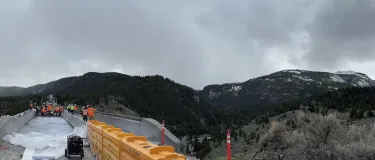Bridge History
The Gardner River Bridge has four main spans for a total structural length is 962 feet. The three support towers have heights of 95, 145, and 150 feet. The maximum height of the bridge is 201 feet above the normal water line of the Gardner River. The bridge deck width is 28 feet while the bridge roadway from curb-to-curb is 25.1 feet wide.
Planning for a new bridge to replace 1905 Army Bridge across the Gardner River began in 1930 with surveys of several possible routes. The final bridge plans were finished in 1938 and the bridge construction contract was awarded to Guy James of Tulsa, Oklahoma, in January 1939. The bridge was completed on November 14, 1939 at a total cost of $247,339.36.
The Grand Loop Road Historic District is a 140.14 mile road system which provides the primary visitor access to the major points of interest and visitor facilities in Yellowstone National Park.
The Federal Highway Administration (FHWA) states that there is an urgent need for effective and durable rehabilitation solutions for deteriorated highway bridge decks. Deck deterioration is commonly caused by a combination of vehicle loading, freeze–thaw degradation, cracking, delamination of cover concrete, and/or corrosion of internal reinforcement. Deteriorated bridge decks are commonly rehabilitated using overlays depending on the cause of deck deterioration, available budget, and desired service life of the rehabilitated structure. One emerging solution for bridge deck rehabilitation is thin, bonded ultra-high performance concrete (UHPC) overlays. As an overlay material, UHPC can provide both structural strengthening and protection from ingress of contaminates using a 1-inch (25 mm) to 2-inch (51 mm) layer of material. This minimizes required material volume and can minimize additional dead load on the bridge structure compared with some traditional overlay solutions. The concept and use of UHPC overlays has been researched in Europe and has been deployed on more than 20 European bridges.
Our Ductal Holcim US Engineered solutions Team developed New UHPC Technologies with materials made in the USA (Buy America, Build America Act) to address the preservation and repair of bridges and structures in North America. We have applied our UHPC technology in hundreds of bridges and structures in the US and Canada.
In this particular project, our Operations Manager Uchenna Nwogu Eng. MBA and Quality Technician John Leavitt supervised the mixing and application of our newest product, Ductal Premix Overlay which was mixed in ready Mix trucks. This will improve the mixing times and no specialized mixer will be needed, hence saving time and money to our clients.
Transportation infrastructure can play an important role in supporting community revitalization. As multimodal transportation systems connect Americans to employment, education, healthcare and other essential services, these infrastructure investments create jobs and benefit businesses, particularly small and disadvantaged business enterprises. Providing transportation options that connect urban cores with neighboring communities can also offer public health, safety, and air and water quality benefits, among others.







